READY TO GET STARTED?
REQUEST A FREE ESTIMATE
Fill out the form below or call (888) 466-7849 for a free, no-obligation estimate.
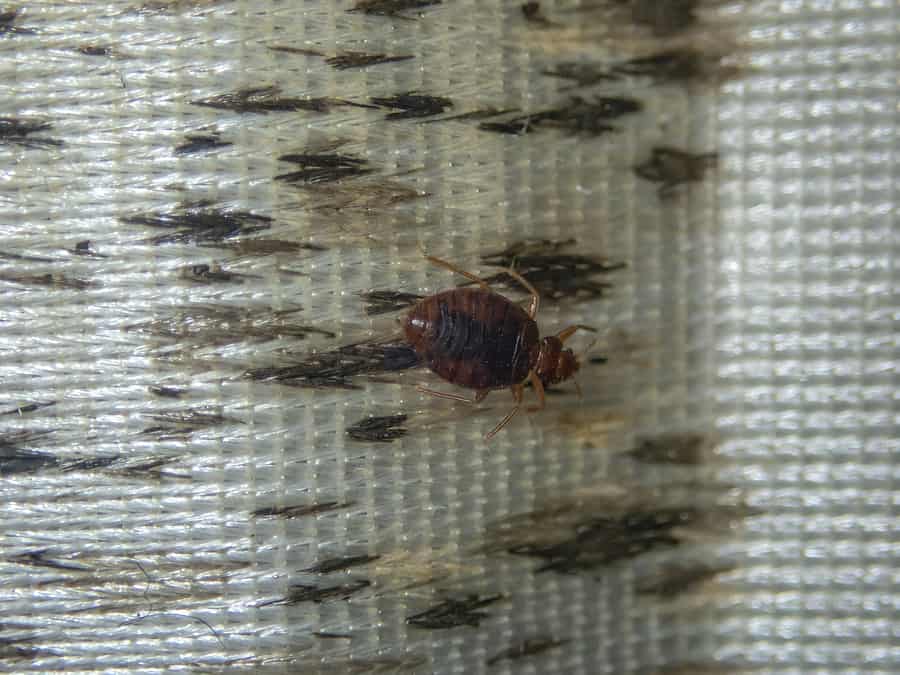
Having a bed bug infestation can be devasting and removing them can be a long and tedious process. To avoid these pests altogether, it’s important for every homeowner to identify early signs of bed bugs in their Alabama home. Check out these common bed bug signs and how you can avoid them.
One of the easier signs to identify an infestation is seeing bed bug bites on your skin. Bed bugs need a blood meal to survive and will often look to us and our pets for it. If bitten, bed bugs will leave a red, itchy welt on your skin. However, it can be easy to confuse bed bug bites with other insect bites. A common indicator that you have been bitten is the series of three or four welts in a row, where you can usually find them on any skin that was exposed during sleep.
After a bed bug has its blood meal, its flat body quickly changes into a round, bloated form. If these bed bugs found themselves in your mattress, you could easily crush or squeeze them when you’re sleeping. While this might not eliminate them, it can cause the blood they just fed on to leak and create a red or rust-colored stain on your sheets. Check your sheets, clothes, and pillows for these spots.
If you start smelling an unusual, musty odor in your bedroom, this could be an indication that bed bugs have infested. When they are threatened or bothered, bed bugs will emit an ‘alarm’ pheromone as a response. This pheromone can produce an odor that smells sweet or musty, like cilantro, almonds, or coriander. While this smell can be faint if a single bed bug emits the odor, it can be very noticeable if many bed bugs are present.
One of the most solid confirmations that a bed bug infestation has occurred is seeing a live adult bed bug or its casing in your home. Abandoned shell casings are a reliable, early sign of a growing infestation. These shell casings are translucent, hollow outlines of the young bed bug. You can often find these casings in mattress seams, upholstered furniture, holes, cracks, and crevices. Live bed bugs are small and brown and typically look like the shape of an apple seed. If you see a live one, it is the best confirmation you need to call your Alabama bed bug control company for help.
Bed bugs are notorious for hitchhiking their way inside homes, making it difficult to prevent them from entering; although by placing and taking a few precautions, you can avoid them. Consider these tips on preventing bed bugs from entering your home:
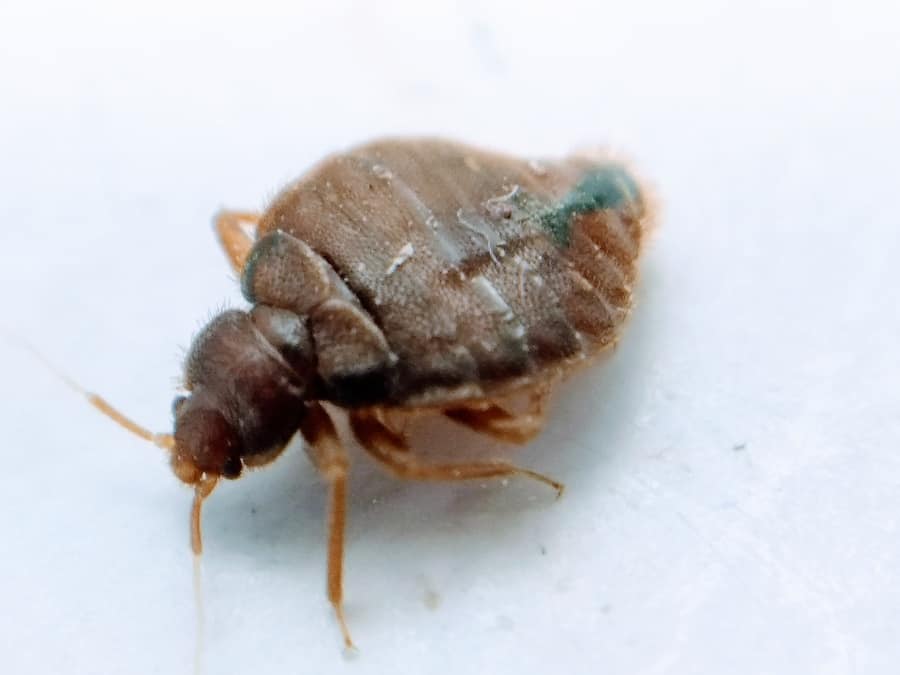
It’s the holiday season, the time of the year when a bed bug infestation can be devastating! Bed bug activity can be confused with only being active in the summer, but they are year-round pests. This means that while the weather cools off, bed bugs are still active during the winter and will be looking towards your Miami Lakes home for warmth! Here’s what you need to know about bed bugs, signs that they’ve infested, and how you can avoid them.
Bed bugs are extremely small, only growing to 3/16th of an inch in length. Before these pests feed, their appearance is brown in color and flat in body shape. After feeding, they become red, swollen, and longer in body length. These pests will often get around by hitchhiking through certain items. Adult bed bugs can be spotted by the human eye, but nymphs are harder to spot, as they are smaller and paler in appearance.
Bed bugs will infest several areas in the home, including behind baseboards, around mattress buttons, within bedding, electrical switch plates, picture frames, and more! There are certain warning signs of a bed bug infestation, including seeing their feces, casings, bloodstains on sheets, bites on yourself or family members, and their eggs. The best evidence, however, is seeing these pests crawling around in your home.
These pests are notorious hitchhikers, catching a ride inside your home through suitcases, old furniture, packages, clothes, and even houseguests. It’s important to be vigilant when traveling or having guests throughout the year. Check out our top preventative measures to avoid a bed bug infestation below,
If you’ve noticed signs of bed bugs or are looking to get ahead of bed bug prevention, consider reaching out to your local South Florida pest control company! These professionals will inspect your home, locate entry points, and recommend a treatment and prevention plan for your home.
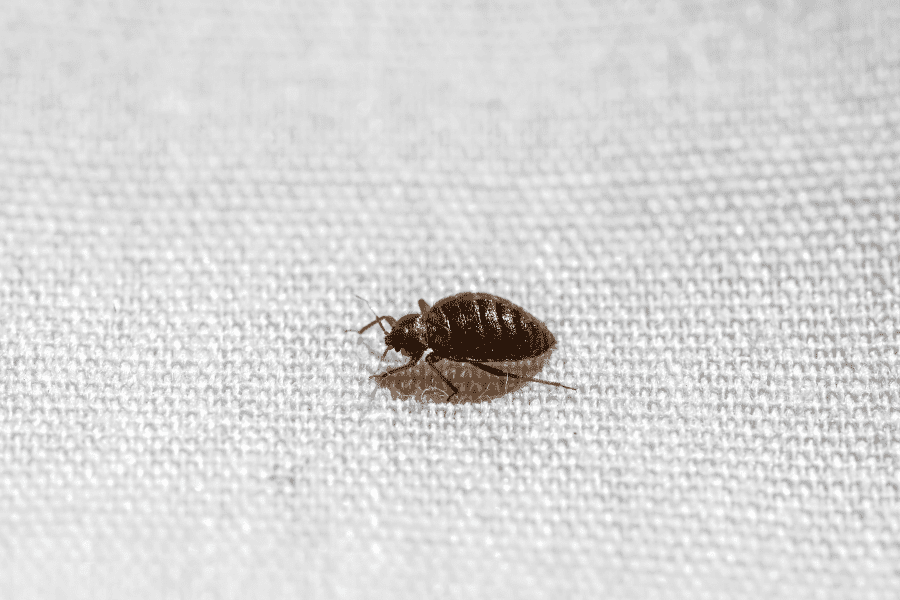
The new year is here and it’s time to get your vacations planned for the upcoming months. Don’t let those vacation plans get ruined by bed bugs! These pests are highly efficient hitchhikers and can move quickly and climb easily into luggage or anything left on a bed in just one night. Hotels and Airbnb’s are the perfect home for bed bugs and are typically where they can be picked up. Here are some tips to prevent bed bugs while traveling!
Once arriving at your home away from home during your vacation, be sure to inspect anything and everything where a bed bug could be hiding. Look for live insects, blood stains, and eggs throughout the room. Typically, with larger infestations, you will notice a sweet, musty odor.
The best place to inspect is the mattress you will be sleeping on. Be sure to take the fitted sheet off the corner of the bed, lift the mattress, and check all the crevices with a flashlight. Other hiding places include baseboards, behind picture frames, and even cracked or ripped wallpaper.
Before using the luggage rack, which you should always use, inspect it for bed bugs. Once cleared, you should then use the rack to keep your luggage elevated off the ground. Keep the rack away from the wall so bed bugs can’t easily climb into your bag.
When beginning to pack for check out, examine your luggage and clothing to make sure you haven’t picked up any extra baggage. A good tip to know is once home, unpack in your garage or outside of your living areas, and put clothes directly in the dryer, as heat is a deterrent for bed bugs.
If you suspect you have returned home from vacation with hitchhikers, reach out to your local, licensed pest control company and receive a FREE bed bug inspection today!
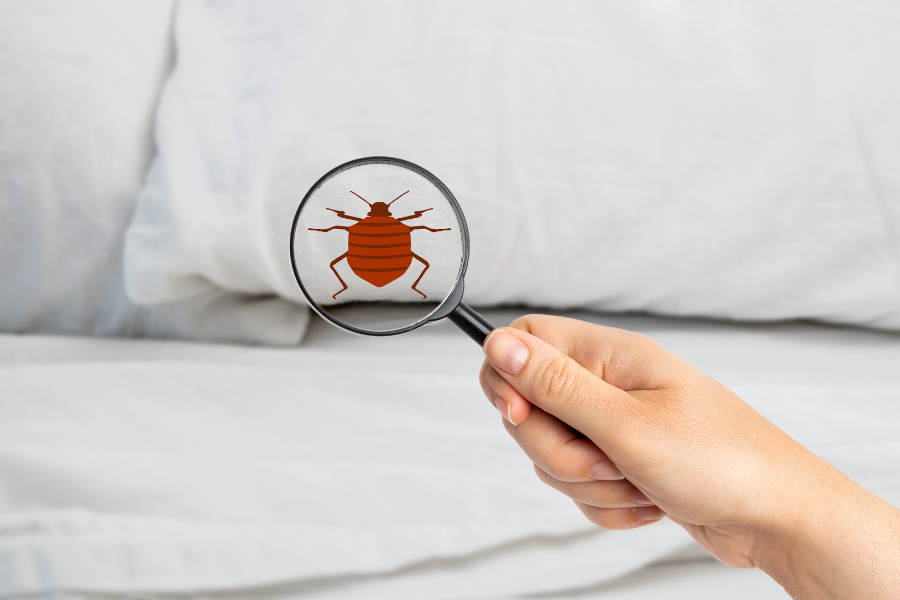
Typically, when temperatures begin to drop, that means many bugs go into a sort of hibernation mode. This isn’t necessarily the case for bed bugs. Being predominantly indoor pests, they tend to survive the colder months. It’s also a big time for them to spread because of all the holiday travels, so always be aware of any pests that could ruin your holiday fun.
There are many ways that bed bugs can spread from one location to another. They will climb into our belongings and can lay their eggs in them. We will then carry these items from a location of infestation to a new location. Even if your bags or items are left outside, it will take a while for them to be harmed by the cold, as they are more resilient to the cold than they are to the heat. And since they will be hiding in our items, they will be protected from the wind and cold air.
Here are some tips to follow while travelling, so you can prevent bed bugs from home with you.
If you believe you have picked up bed bugs while on your travels, be sure to call your local pest control company and they will be able to assist you with a customized plan of action.
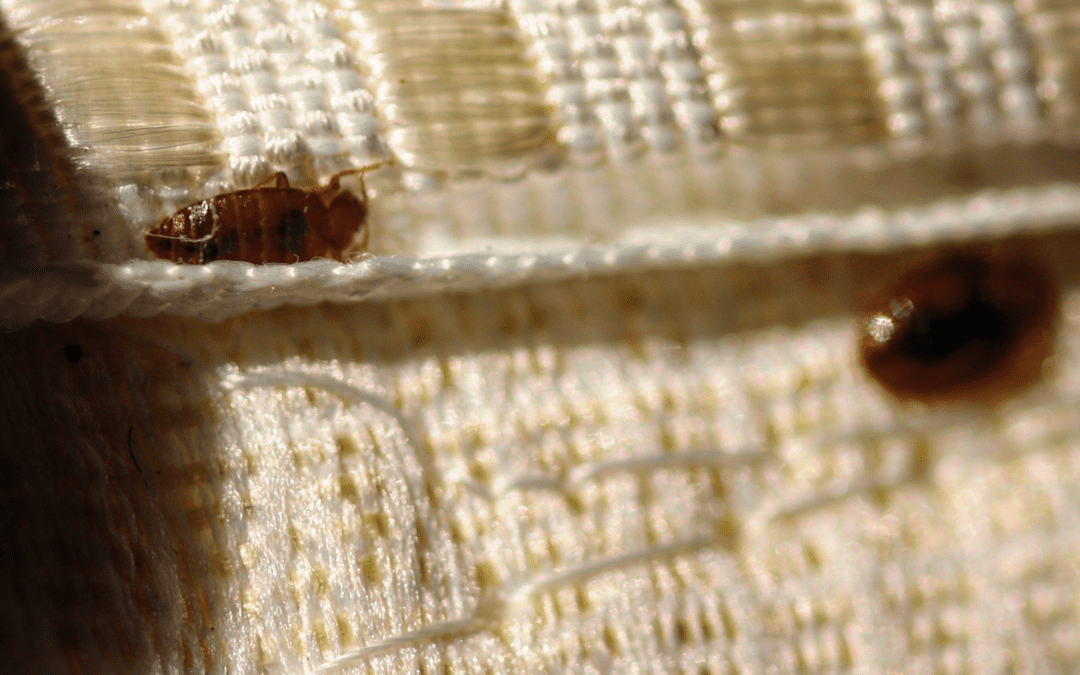
It’s time to unpack and get back to normal after all the summer vacations we were able to conquer. Hopefully, you came back to a stress-free situation that didn’t involve bed bugs; but if you weren’t one of the lucky ones, here are some tips to rid yourself of those unwanted pests.
Identify the pest to make sure it is indeed a bed bug. If you live in an apartment building, be sure to notify your landlord immediately, as they might have the responsibility of providing treatments. If you are in a single-family home, inspect all areas of your home to understand the extent of the infestation.
So, you have bed bugs, now what? Keep records throughout the whole process. Note dates and exact locations where these pests were found. This will help you track progress and to know where to target your removal efforts. You should be checking for at least a year after you’re done to make sure they are all gone.
Be sure to keep the infestation from spreading by implementing these tips:
Preparing for treatment is very important, whether treating bed bugs yourself or with professional help. If you plan on treating them yourself, ensure the methods you select are safe, effective, and legal. Avoid treatments that don’t work, like rubbing alcohol, kerosene, or gasoline, which are highly flammable. Sticky traps are also not effective in stopping bed bugs.
Some useful treatment solutions are:
The best solution for bed bugs is to contact your local pest control company. These professionals will have access to highly effective treatment methods. They will provide you with a bed bug control plan that is right for you and your property.